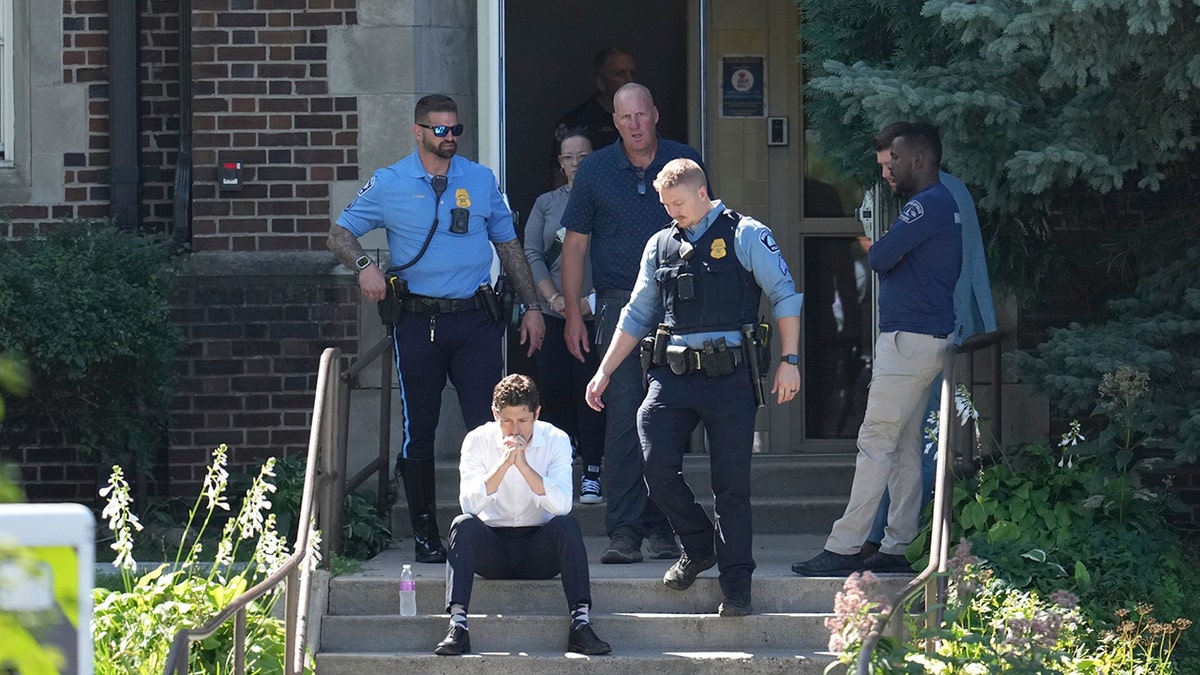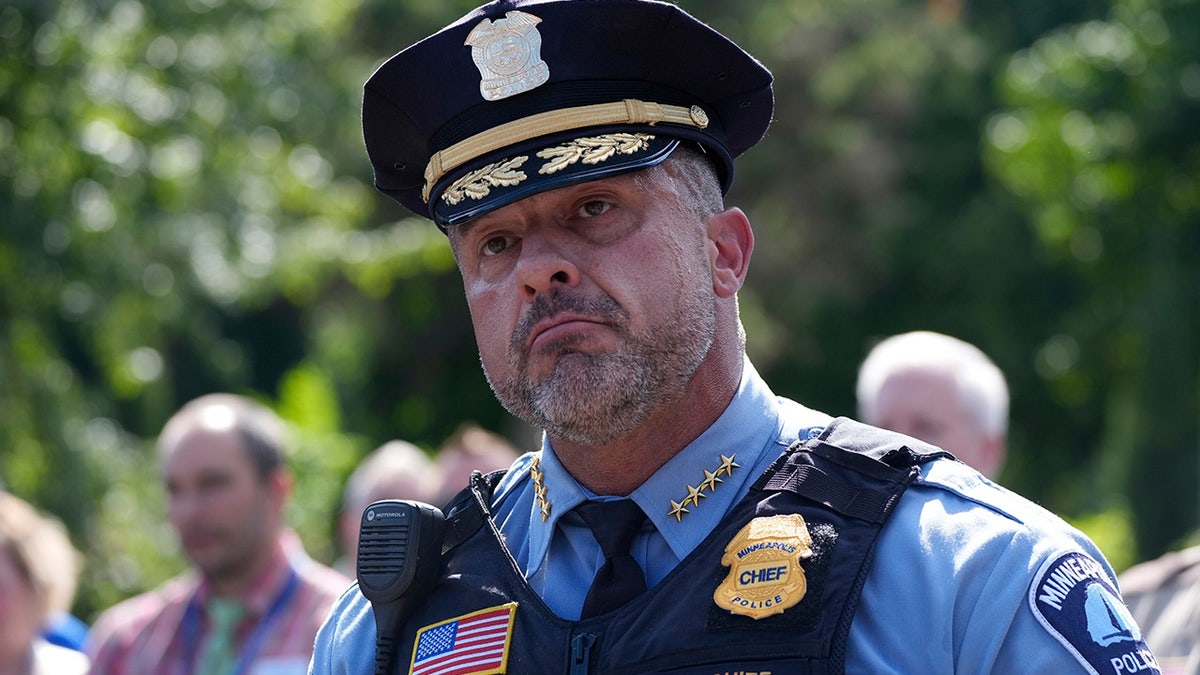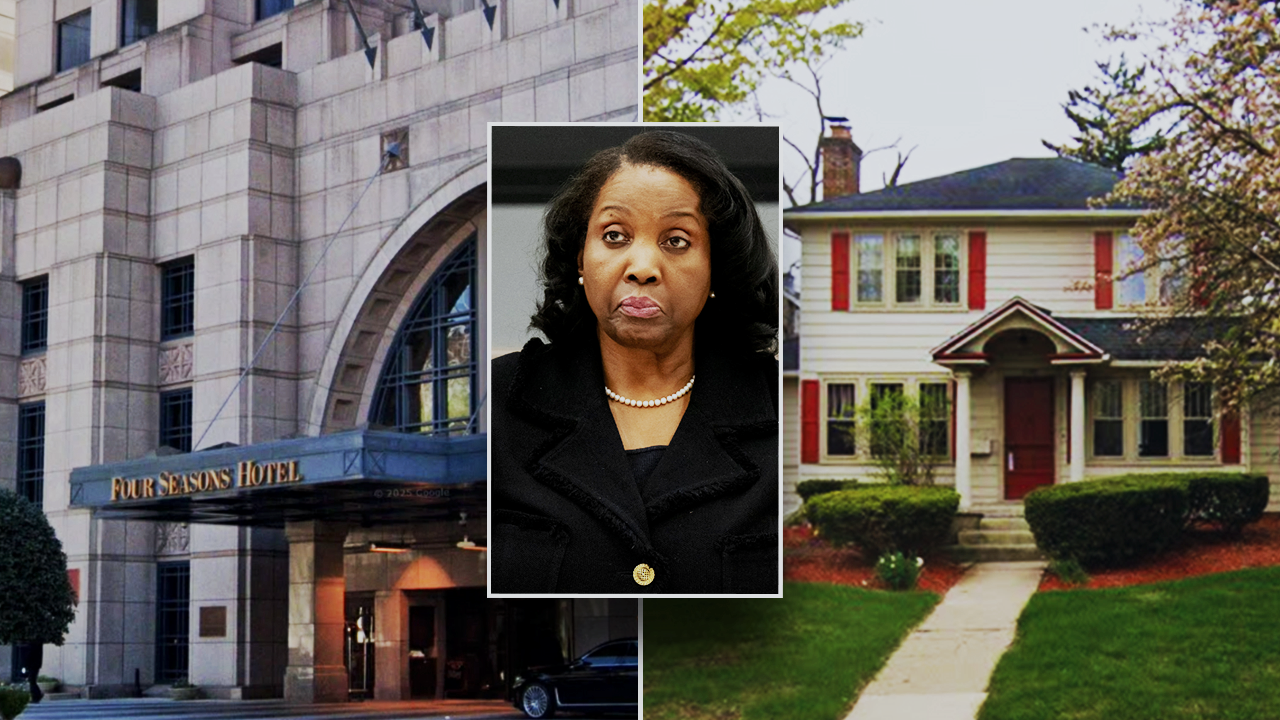NEWYou can now listen to Fox News articles!
Minneapolis was shaken when gunfire erupted outside Annunciation Catholic Church on Wednesday, Aug. 27 – the fourth major shooting in less than 24 hours.
The school attack, which terrified students and parents, capped a violent spree that left at least three people dead and more than a dozen others wounded across the city.
The Violent Span
The violence began Tuesday afternoon, Aug. 26, when a gunman opened fire on a group standing on a sidewalk in broad daylight. One victim was killed and six others wounded.
Later that night, a second deadly shooting unfolded, followed by a third shooting in the early morning hours of Wednesday, Aug. 27. Then, just hours later, gunfire rang out outside the church near Annunciation Catholic School – an attack that rocked an already reeling community.
MINNEAPOLIS CHURCH SHOOTING AUDIO CAPTURES FIRST RESPONDERS RUSHING TO CHAOTIC SCENE IN DEADLY ATTACK
Following the third reported shooting, Minneapolis Police Chief Brian O’Hara expressed concern, calling the recent spike in gun violence “deeply unsettling.”
“Across three separate multiple-victim shootings, eight people have been injured by gunfire and three have lost their lives,” O’Hara said in a news release, issued before the school attack added to the toll.
“While this level of violence is cause for concern, our resolve to fight for the safety of every person in our community is unwavering,” he continued.
Immediate Response
Governor Tim Walz responded by deploying additional state law enforcement officers to Minneapolis to bolster patrols around schools and places of worship.
“No child in America should go to school apprehensive of danger, of losing a classmate, of gunshots during prayer,” Walz said in a news release. “We will work in close partnership with the City of Minneapolis to give residents every reassurance that their families and their children are safe.”
WHAT LEADS SOMEONE TO COMMIT A MASS SHOOTING? TRUMP ADMIN, RFK JR PLAN TO FIND OUT

Minnesota State Patrol Col. Christina Bogojevic stressed that the state’s role extends beyond enforcement. “Our presence is about more than patrols – it’s about letting the people of Minneapolis know they are not alone.”
Minnesota Department of Public Safety Commissioner Bob Jacobson echoed that message, noting: “The loss Minneapolis is experiencing right now is felt across our entire state. By coming together, local and state law enforcement are sending a clear message: The people of Minneapolis are not alone.”
Progress Unraveled
The spree came just months after city officials touted progress in curbing violence. Minneapolis Mayor Jacob Frey previously highlighted stretches with no homicides and said the city’s Northside was “safer than it’s been in over a decade.”
City data showed 2024 recorded the fewest gunshot victims since 2014. But Frey acknowledged how quickly progress can unravel. Just before his spring remarks, an April 29 mass shooting left four people dead.
Jillian Peterson, executive director of the Violence Prevention Project Research Center and a criminology professor at Hamline University, told USA Today that surges in violence can still occur despite positive trends.
KAROLINE LEAVITT CALLS PSAKI’S PRAYER COMMENTS ‘UTTERLY DISRESPECTFUL’ AFTER MINNEAPOLIS SCHOOL SHOOTING

“We tend to see clusters like this, and it’s difficult to determine whether they’re part of a larger pattern or isolated incidents,” Peterson said. “But something like the shooting at Annunciation School hasn’t happened in a very long time.”
Adding to the city’s trauma were the shootings of two Minnesota lawmakers and their spouses at their homes in July.
According to the Gun Violence Archive, a nonprofit that tracks such incidents, Minneapolis has seen at least six mass shootings in 2025 so far. The organization defines a mass shooting as one where four or more people are hit by gunfire, not including the shooter.
Structural Challenges
Public safety expert David Zimmer argued that, despite improvements, Minneapolis remains the epicenter of Minnesota’s violent crime problem.
“Following the post-George Floyd uprising in 2020, Minneapolis experienced an explosion in violent crime, including murder, robbery and carjackings,” Zimmer explained. “While those elevated rates of violent crime have decreased over their peaks in 2022 and 2023, violent crime in 2024 remained 45% higher than it had been in 2018.”
Zimmer said that stat is significant because while Minneapolis only represents 7% of Minnesota’s population, the city accounts for:
- 30% of all aggravated assaults
- 46% of all murders
- 56% of all robberies
- 91% of all carjackings
“As Minneapolis goes, so goes Minnesota,” Zimmer said.
VANCE BLASTS PSAKI FOR POST DECLARING PRAYER ‘IS NOT FREAKING ENOUGH’ IN RESPONSE TO MINNESOTA SHOOTING
Zimmer also noted the Minneapolis Police Department is operating 40% below authorized strength, with just 550 sworn officers, one of the lowest staffing ratios among major U.S. cities.
Despite staffing challenges, Zimmer praised the MPD’s “Crime Pattern Response Protocol” which he said has proven successful in responding to patterns of violent robberies and carjackings.
Policy and Politics
The violent spree has renewed political battles over Minnesota’s progressive criminal justice policies.
Zimmer argued that lawmakers often prioritize the impact of laws on offenders rather than victims. “The fact is, Minnesota has consistently been among the states with the lowest imprisonment rates in the nation,” he said, “but narratives about overincarceration make it difficult to strengthen consequences for criminal activity.”
CLICK TO GET THE FOX NEWS APP
Retired NYPD Inspector and Fox News contributor Paul Mauro also pointed to the spree’s scale: “We’re well into the twenties on shooting victims in that town over the last two days,” he wrote on X, calling out progressive officials like Hennepin County District Attorney Mary Moriarty.
According to data from the Minnesota Department of Public Safety, murders climbed sharply after Walz took office in 2019, from 117 that year to a peak of 201 in 2021, before gradually falling to 172 in 2023.
Analysts blame pandemic disruptions, anti-police sentiment, progressive prosecutorial decisions, and the so-called “Ferguson effect,” where police scale back proactive enforcement.
Governor Walz’s office did not respond to Fox News Digital’s request for comment.
Fox News’ Emma Colton contributed to this report.
Stepheny Price covers crime, including missing persons, homicides and migrant crime. Story tips: [email protected].













